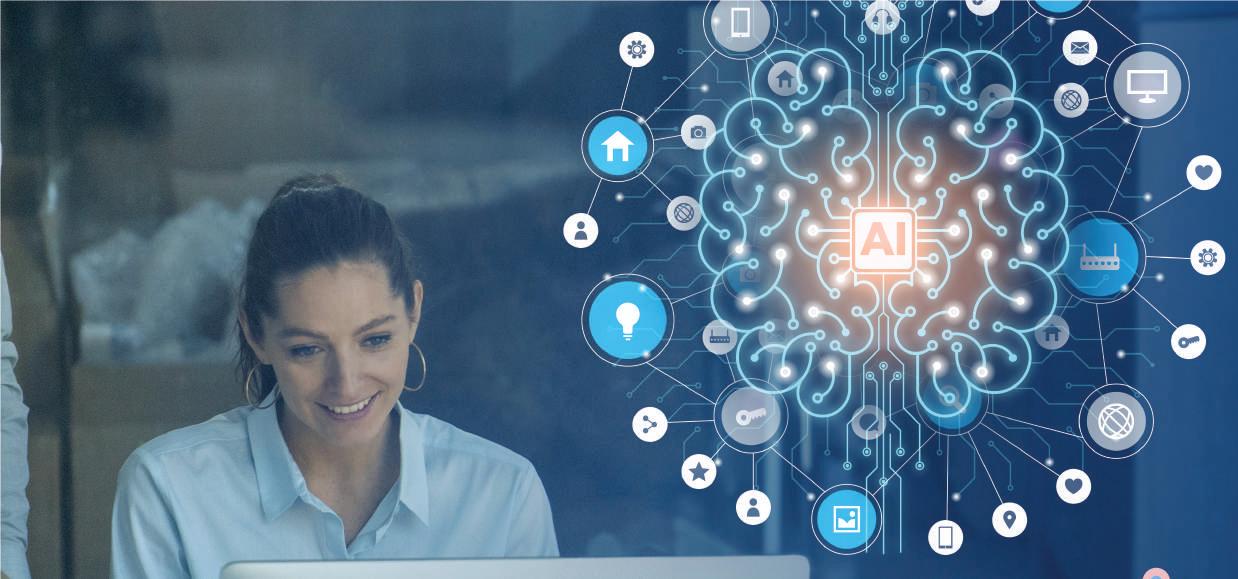5 Ways Cognitive Computing Transforms Clinical Trials
AUTHOR: MOULIK SHAH, FOUNDER AND CEO, MAXISIT
Find out how cognitive computing keeps clinical trials on a path to success by improving patient enrollment, reducing dropouts, and more.

AUTHOR: MOULIK SHAH, FOUNDER AND CEO, MAXISIT
Find out how cognitive computing keeps clinical trials on a path to success by improving patient enrollment, reducing dropouts, and more.
Clinical research generates zettabytes of data each year, but until recently, we’ve only been able to use a fraction of it all.
Advances in cognitive computing give researchers the tools to translate more of that data into usable insights. Powered by machine learning (ML) algorithms, cognitive computing turns big data into valuable, actionable data. More specifically, it enables clinical trial sponsors to manage, classify, and analyze large datasets to produce relevant insights—insights that can reduce risk and help sponsors move from patient recruitment to regulatory submission in a more timely manner.
Cognitive computing has the potential to enhance and advance several functions within clinical operations, including patient recruitment, data management, and data analysis. As risk-based quality management (RBQM) becomes more widely adopted, cognitive computing will become not just nice to have, but essential for conducting clinical trials.
Cognitive cloud computing systems are designed to replicate how humans think. These self-learning systems combine information from multiple sources to identify patterns, evaluate context, and produce answers. For this, cognitive computing systems rely on ML algorithms, including natural language processing (NLP) and deep learning (DL).
With cognitive computing, life sciences organizations gain more robust and valuable insights from all the data at their disposal. In a fraction of the time and cost of manual methods, cognitive computing sifts through real-world data (RWD), historical trial data, and/or patient data to provide information that informs successful, cost-efficient clinical trials.
Cognitive computing analyzes data from both inside and outside the EDC. With a real-time view of what’s happening within the trial, study teams can take immediate action. That action may include investigating abnormally high or low lab values, consulting with a site that’s falling behind on enrollment, or adjusting the study protocol based on patient-reported outcomes data.
About 80% of clinical trials fail to progress past Phase 2. Predictive analytics can help drug developers determine which compounds are most likely to succeed, alongside which help improve the odds of progression from preclinical research through regulatory submission.
ML and NLP analyze large datasets, including clinical trial records, registries, and claims data, to extract high-value information. Researchers can use that information to inform study design, site selection, and patient recruitment.
For example, a researcher could run queries in large databases to find information on clinical trial sites, selection criteria, patient characteristics, and more. In an interactive and self-service manner, the researcher could discover the following:
Conducting this type of preliminary research with the help of cognitive computing dramatically reduces the time spent planning a study. It also helps ensure a more targeted study design.
ML and DL models can monitor medication and health data for “red flags” that indicate a patient at risk of dropping out. By identifying this information at the moment, cognitive computing helps study teams keep their trial on track.
For example, one cancer study used DL to determine the smallest doses of a study drug needed to shrink tumors while reducing toxicity. The model offered the potential to improve adherence by recommending the lowest-possible dose to produce the desired effect with the lowest risk of side effects. It also monitored patient data for early warning signs of nonadherence. When it flagged a suspected issue, the study team could review the finding and contact the patient for a mutually beneficial resolution.
Cognitive computing excels at identifying patterns and trends that might go unnoticed through traditional data analysis methods. By applying NLP and ML to clinical datasets, sponsors and study teams can identify risks before and during clinical trials.
For example, cognitive systems can analyze trial protocols, medical literature, patient records, and past trial data to spot potential issues before they occur. Based on that information, sponsors can focus monitoring on high-risk processes and critical data points, developing mitigation strategies accordingly.
During the trial, cognitive computing enables centralized monitoring, a component of risk-based management. Advanced tools help monitors identify trends, anomalies, and risks, as well as monitor data for safety signals. This helps enhance effectiveness and improve overall trial quality.


Cognitive cloud computing facilitates real-time data access, which helps open lines of communication between patients, patient coordinators, and the primary investigator. ML algorithms can process wearables data to produce study-relevant insights with fewer in-person site visits, making the trial more convenient for patients. Coordinators can also use analytics to generate patient-specific reports, which provide useful information for the study team. They also provide a way to educate patients about their disease and their progress in the trial.
When patients have the freedom to choose how they participate, and when they feel informed and respected, they’re more likely to stay motivated. Motivated patients are more likely to stay in the trial for the entirety of its duration.
Integrating technology that uses cognitive cloud computing offers compelling business and clinical advantages for pharma and biopharma companies. Potential benefits, such as improved patient adherence, shorter timelines, and lower operational costs, easily outweigh the risk of adopting new technology and the cost of training.
It’s well reported that the cost and time it takes to bring drugs and biologics to market are simply unsustainable. The advanced processing and analytical power of cognitive computing is a critical component of changing clinical trials for the better.
MaxisIT’s purpose-fit and intelligent clinical data analytics platform helps improve clinical trial performance, mitigate risk, and optimize clinical outcomes. We provide a centralized and reliable source of truth for diverse data types from various sources, giving life sciences companies real-time insight to shorten cycle time and increase return on investment.
Incorporating an end-to-end clinical data pipeline from intake to visualization, MaxisIT's solutions are powered by AI/ML and metadata-centric approaches. Our impressive portfolio of over 3,300 clinical trials and an unparalleled 100% customer retention rate affirm the quality and reliability of our services.

Moulik Shah Founder & CEO, MaxisIT
Moulik Shah is a passionate healthcare technology entrepreneur and the visionary CEO of MaxisIT, where he has been at the forefront of leveraging technology to transform pharmaceutical and life sciences clinical trials.
His dedication to improving patient outcomes and his leadership in directing patient-centricity, patient diversity, interoperability, and real-world-data-led collaborations have been at the core of his vision of an integrated healthcare ecosystem based on effective use of data and analytics platforms.
He has been instrumental in driving innovation and progress in the industry. Under Moulik’s leadership, MaxisIT has become a leading provider of clinical data and analytics which is driving real-world impact in the pharmaceutical and life sciences clinical trials.
https://www.maxisit.com/